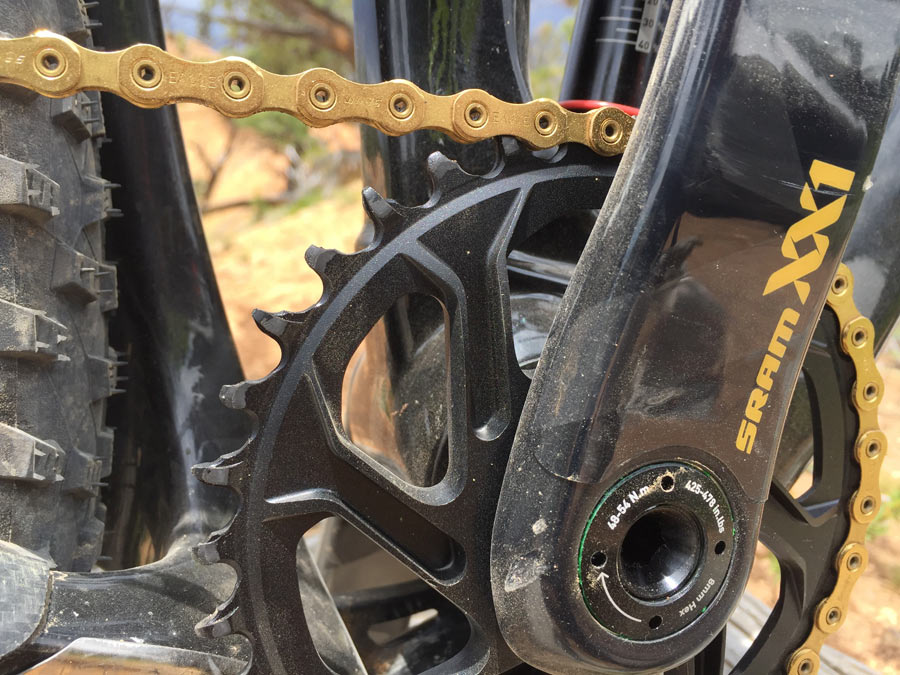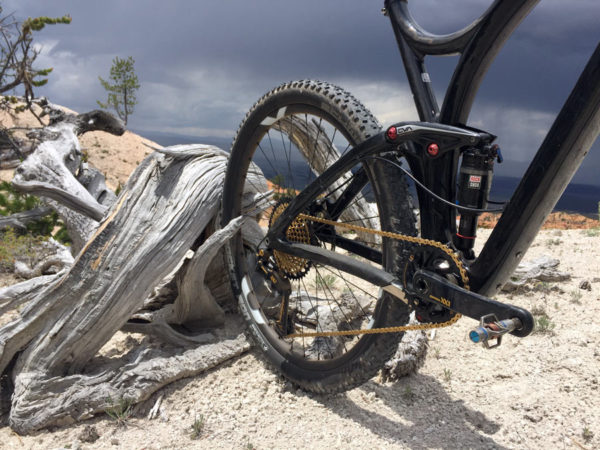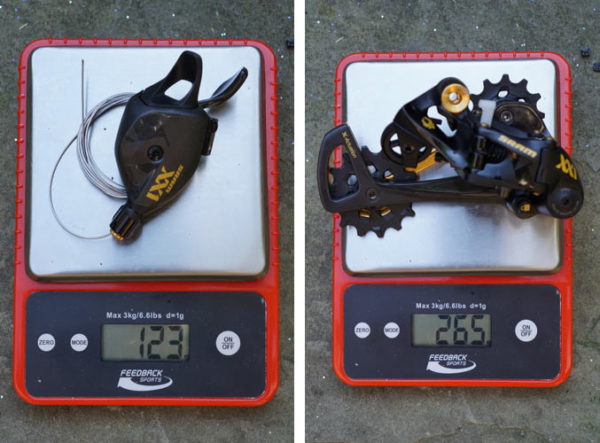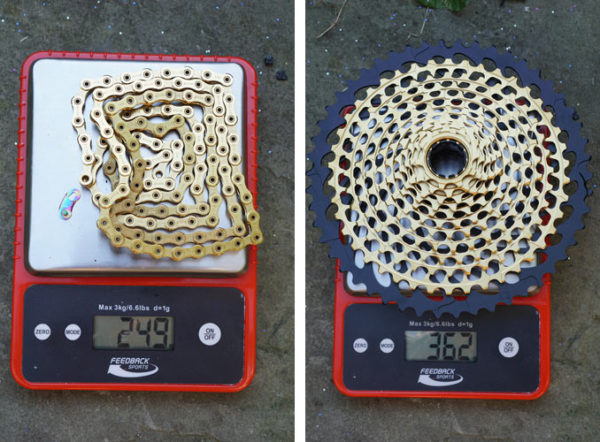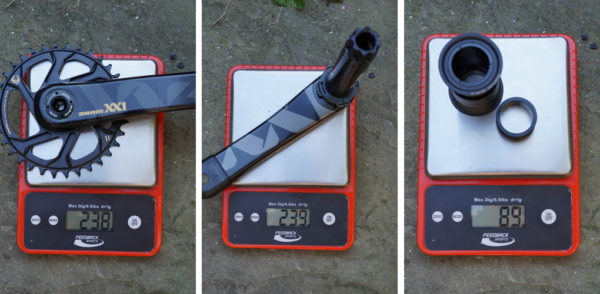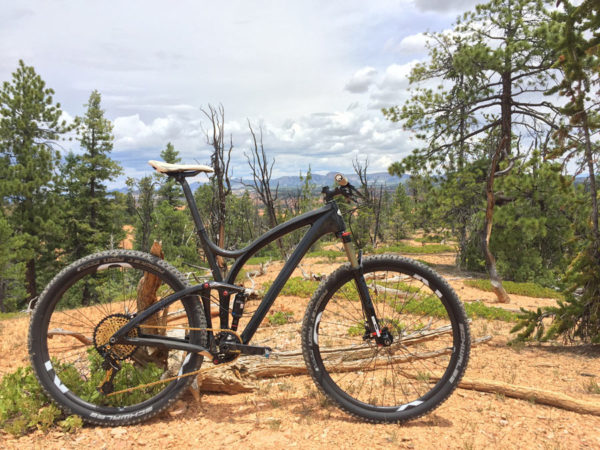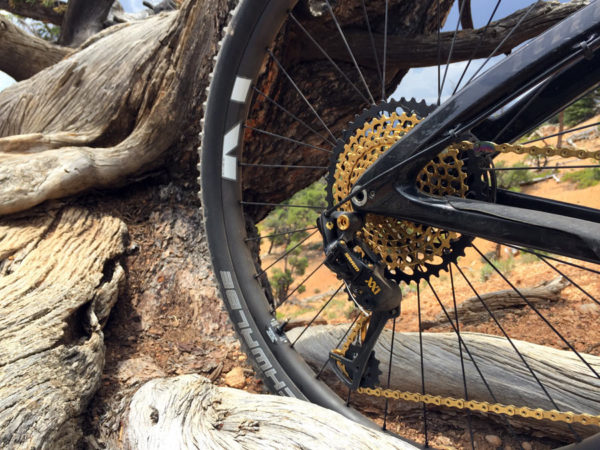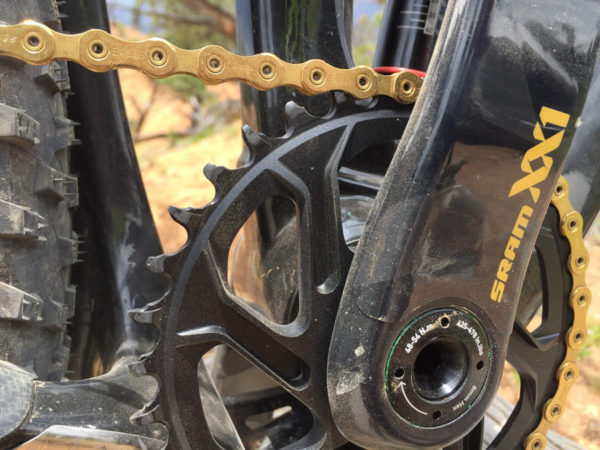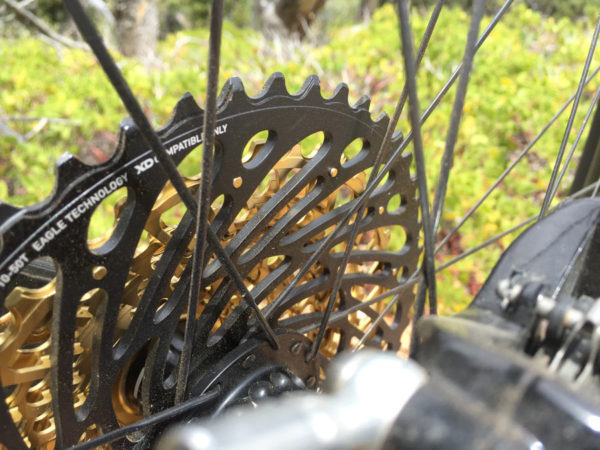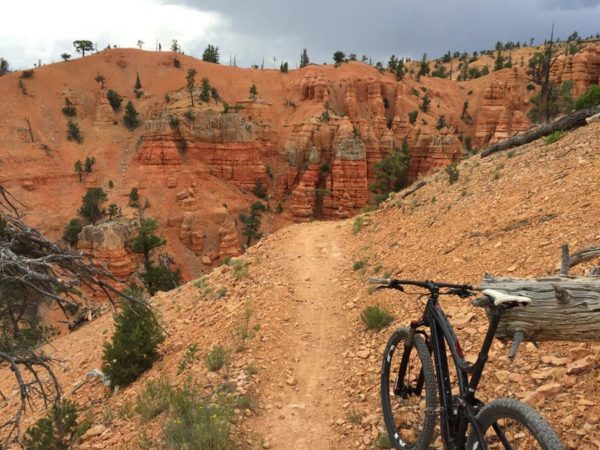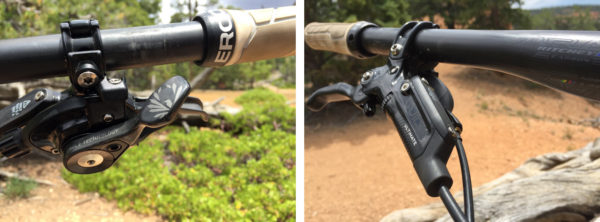We weighed pre-production parts at the SRAM Eagle 12-speed group launch earlier this year, but now we’ve got our own group installed on our own bike for a proper long term review. We also covered the technical details in another post and even had some first ride impressions on the Kona demo bike provided by SRAM. But, there’s nothing like mounting it up to a familiar bike and hitting the trails. In this case, I brought the bike with me to Dixie National Forest (just outside Bryce Canyon) and tackled Thunder Mountain Trail, which turned out to be the most beautiful mountain bike ride I’ve ever done. But before that, all the parts were thrown on the scale to get true production weights…
Shifter is 123g (with cable) and rear derailleur is 265g.
Chain is 249g (full length, with quick connect) and cassette is 362g.
A 175mm BB30 crank arm with 32T chainring is 238g for driveside and 239g for non-drive, for a total of 477g. SRAM’s standard pressfit 30 bottom bracket is 89g with the required spacer that sits on the driveside between it and the crank.
Here’s what it looks like on a Niner JET9 RDO. Install was straight forward, nothing special required other than getting chain length correct. On the 1×11 groups, SRAM recommends wrapping the chain around the largest cogs and the chainring (without it going through the derailleur) and pulling it together so that you have about two links (one inner, one outer) overlapping. That determines the chain length.
With Eagle’s 50-tooth cog and larger pulley wheels, overlap grows to about four links. As luck would have it, the chain they sent was exactly the right length without needing to be trimmed when using the 32-tooth chainring. My cable housing was in good shape, so I re-used it to avoid fishing new line through the downtube.
While our parts are technically early production, they came with no packaging, which meant the spacer guide for setting up the rear derailleur position wasn’t present. But, I compared my setup with the images from the launch to get it close and have had no problems.
Beyond the giant new cog, the most visible difference from XX1 to Eagle is the tooth shaping on the chainring. By employing a multi-faceted, multi-angled profile in addition to the narrow-wide profile, SRAM has created a nearly flawless chain engagement and release system. It’s quiet, smooth and (so far) hasn’t dropped a single chain or had any chain suck. The 3D spider is overly stiff, as are their carbon crank arms, which is a good thing. The only issue I’ve had is the crank arm coming loose by the end of my first ride, but a quick turn of the wrench had it back in shape for ride two. Time will tell if this becomes a persistent problem. I’ve had a well used SRAM road crankset come loose with some frequency until I overtightened it a bit, after which it stayed put without creating any noticeable friction in the system, so I’m not too concerned for now.
The real selling point for Eagle is the additional 50T cog. For all of us who’ve grown to love the 10-42 range offered by their 11-speed groups, this is just icing on the cake. I used it in the Italian Super Enduro during our first test rides, and I used it again at Thunder Mountain on some of the very steep summit efforts near the Hoodoos.
The wider range helps get up to the top…
and still left plenty of oomph for hammering back down to the bottom. In the past, I’d have stuck a 30-tooth on the front if I knew there was going to be a ton of climbing, but now a 32 works just fine and allows me to stay mostly in the middle of the cassette during normal rolling hills.
The trigger feels the same as ever, just with a sweet Eagle logo on the thumb lever. The only minor issue I found during set up is that it’s a bit more finicky as to where the derailleur is set. I got it close in the stand, but it needed fine tuning not he trail. I was able to dial it’s position while riding using the barrel adjuster until it was shifting equally well in both directions.
So far, so good. As in, soooooo good. If you’ve been a fan of SRAM’s mountain bike drivetrains, Eagle is simply a more refined, more capable version. We’ll report back with long term performance later…
